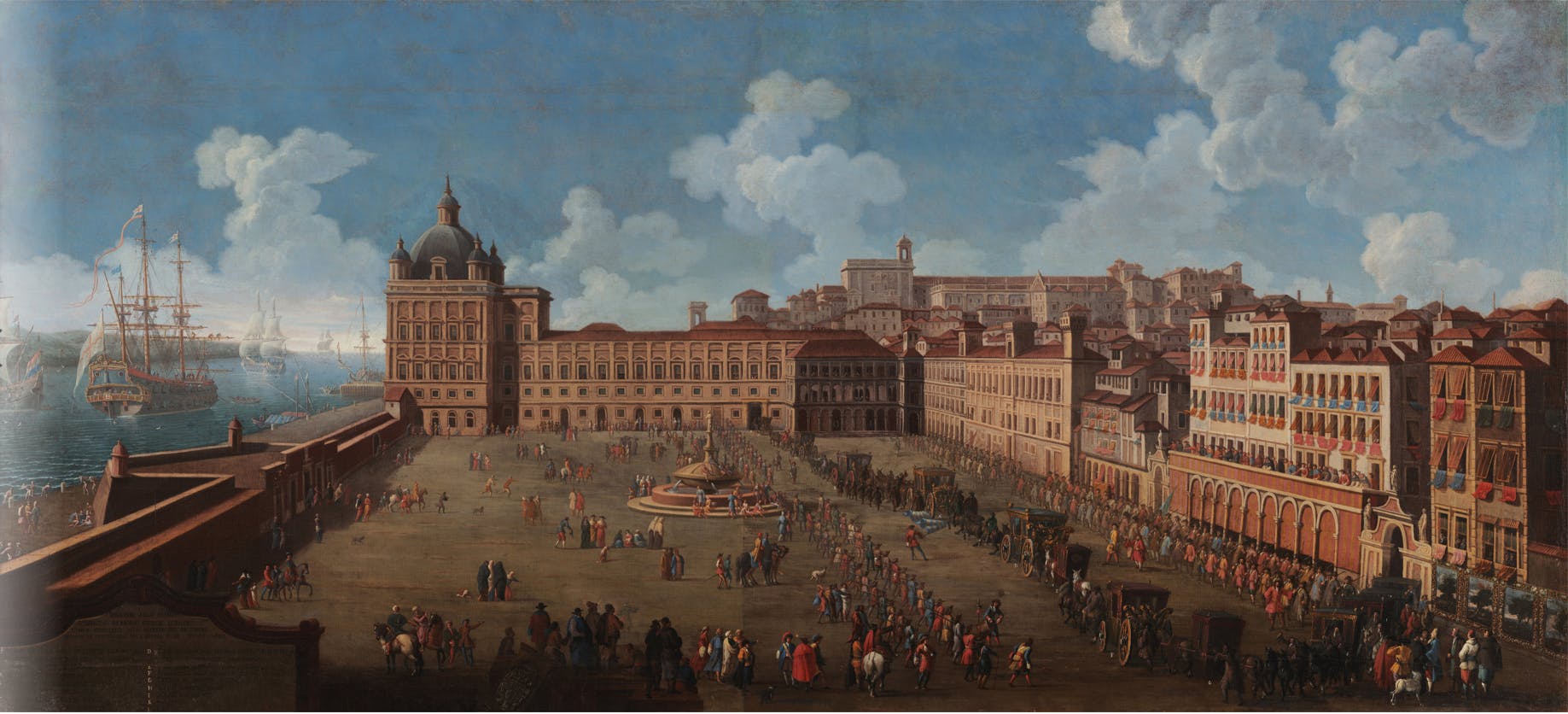
On the 1st of November 1755, at around 9:40 AM, an intense earthquake hit the city, destroying most of its buildings, streets and squares. A tsunami followed the earthquake, between 60 and 90 minutes after the shakes, with waves of around 5m height coming from the Tagus river and flooding the city riverside, about to where is today Arco da Rua Augusta. Simultaneously, fires propagated, originated by the stoves in the houses and the candelabra in the churches, but also set by criminals that took the chance to plunder palaces and churches. D. José I and his family survived the Earthquake due to the princesses wishing to spend the public holiday at their countryside residence, the Royal Palace of Belém. The area of Belém, considered at the time one of the outskirts of the city, was populated by only palaces and farms, therefore, the effect of the earthquake was not as devastating as in the city.
On the days before the Earthquake, Lisbon impressed foreigners and travellers with its wealth, palaces and churches. The torrent of gold that came from Brazil allowed feasting parties and sumptuous fireworks, as well as the building of majestic monuments such as the brand new Opera House –inaugurated in March 1755, it was famous for its richness, sumptuousness and sheer size: 600 people in the audience, four stories of cabins (38 in total) and a stage so deep that it could accommodate 25 horses.
After the disaster, it was up to Marquês de Pombal, then Secretary of State, to reorganize the city and ensure that order in the kingdom was restored as soon as possible. Through plans developed by military engineers Manuel da Maia, Eugénio dos Santos and Carlos Mardel, the Secretary implemented a city plan in close relation with the Enlightenment ideals, with orthogonal wide streets and no longer a skyline dominated by church towers and palace domes.


